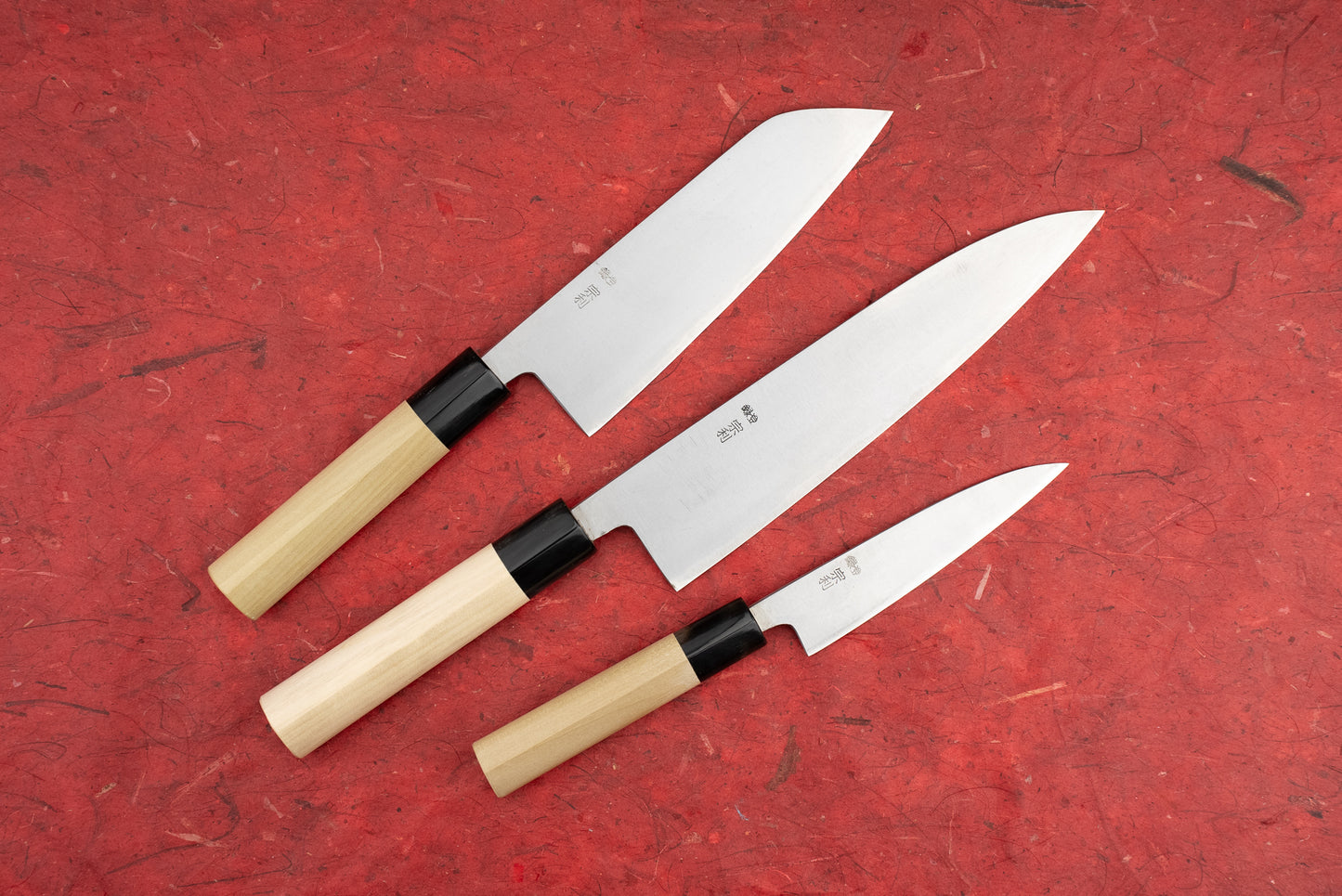Munetoshi Shirogami Migaki Knife Set
Munetoshi Shirogami Migaki Knife Set
Couldn't load pickup availability
Koichi Tsurumaki-san was born into a blacksmithing family, the third generation of Tsurumaki who specialize in sickle forging. As is tradition, he started working with his father when he was 16, but almost a half-century later, he started making kitchen knives! As a craftsman specializing in thin blades, called Usamono in Sanjo, he was well equipped with the skill and machinery to forge kitchen blades.
Sticking to proven methods and materials, Munetoshi forges his blades from Shirogami, known as white carbon steel. I’ve been using knives made from this steel for two decades, and it still blows me away whenever I cut with it. It gets as sharp as a razor, flying through meat and vegetables like nothing. Tsurumaki-san has given these blades a clean finish and handle, letting the blade speak for itself when it’s time to get chopping. He gets nothing but respect from me because these knives are cut like crazy.
Set contains
The classic chef's knife. Gyuto means "cow sword", cool huh?
| Shape | |
|---|---|
| Steel Type |
Rust Prone ⓘ
This knife can rust, click to learn more.
|
| Rockwell Hardness | 62 - 63 |
| Edge/Bevel | |
| Handle | Wa (Japanese) Handle - Oval Cherrywood Black Pakkawood Collar |
| Made in |
Knife Care
Knife Care
Shipping and Returns
Shipping and Returns
We aim to ship your order within 1 business day at Knifewear, if there is a hold up, we'll aim to let you know and give you a timeline.
We offer $3 shipping on orders over $100* anywhere in Canada and $200* to customers in the USA. We ship worldwide, and offer up to the minute rates from our shipping partner DHL.
*Konro Grills and some other larger items are excluded from the free shipping offer.
How do I make a return on an online order?
No worries, we've got you sorted. Head over to https://knifewear.com/returns and follow the prompts.
Can I pick up my order Curbside / At the store?
Absolutely, as long as all the items you are looking for are in stock at the location you want to pickup from, you'll be able to select that at the checkout. If one or more items aren't at your preferred location we are happy to ship it to you.
Request Additional Info
Request Additional Info


